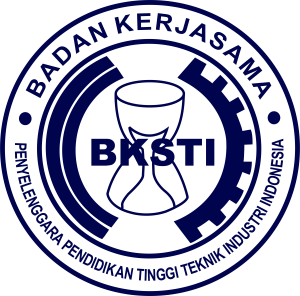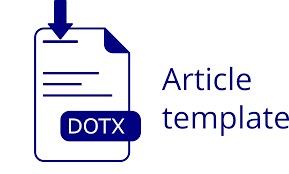Pengendalian Kualitas dalam Upaya Menurunkan Produk Cacat dengan Metode PDCA (Studi Kasus di PT. XYZ)
DOI:
https://doi.org/10.37090/indstrk.v7i1.855Abstract
PT. XYZ is a company engaged in the packaging printing industry. In the production process, defective products are quite natural, but every company has a tolerance limit or maximum limit for defective products as their reference in order to know whether the company's production process and quality are good or not. The company itself has a maximum percentage target for defective products, which is 1.5% of one week's production. In reality on the ground, the percentage of defective products exceeds the tolerance limit. From the background of these problems the company needs quality control which is useful for reducing product defects in production so as to achieve quality targets according to company expectations. Quality control activities are carried out using the PDCA method to find out the constraints that cause defective products and can make improvements to the problem of the defective product. Using the PDCA method requires analysis, so tools such as pareto, fishbone, and 5Why diagrams are needed to find out the root cause of the problem. After applying the PDCA method 2 times, the percentage of defective products decreased from 2.89% to 0.43%. This study also has the potential to save costs from activities carried out such as replacing the vacuum pad which has a potential cost savings of Rp. 6,480,000 per year and the cam follower replacement has a potential cost savings of Rp. 1,320,000 per year.
Keywords: Defect, Product, Quality, PDCA
Downloads
References
Atmaja, L, T., dkk., (2018). Analisis Efektivitas Mesin Pressing Ph-1400 Dengan Metode Overall Equipment Effectiveness (OEE) Di PT. Surya
Siam Keramik. Jurnal Teknologi Universitas Pamulang. Vol.1(1), Hlm. 9.
Fatah, A., Zaqi, A. (2021). Peningkatan dan Pengendalian Kualitas Produk dengan Menggunakan Metode PDCA (Studi Kasus pada PT. X). Jurnal Rekayasa Industri.
Haryono., dkk., (2015). Pengendalian Kualitas Statistik. Bandung : Alfabeta.
Isniah, S., et all., (2020). Plan-Do-Check- Action (PDCA) Method: Literature Review and Research Issue. Jurnal Sistem dan Manajemen Industri.Vol. 4(1), 72 -81.
Rachman, P., (2020). Implementasi Plan- Do-Check-Act (PDCA) Berbasis Key Perfomance Indicator (KPI): Stdui Kasus di SMP-SMA Integral Ar- Rohmah Dau Malang. Al-Tanzim: Jurmal Pendidikan Manajemen Islam.
Shymamy, A., dkk., (2021). Analisis Pengendalian Kualitas Produk dengan Statistical Process Control. Jurnal Ilmiah Manajemen, Vol. 2 No. 2.
Setyawan A., Subali., (2016). The Implementation of Seven Quality Management Tools. Jurnal Ilmiah Mahasiswa Universitas Surabaya Vol.6(2).
Silva, A, S., et all. (2017). Cleaner Production and PDCA Cycle : Practical Application For Reducing The Cans Loss Index in a Beverage Company. Journal of Cleaner Production, Vol. 150,324 - 338.
Suryani, F., (2020). Statistical Quality Control untuk menganalisa Kecacatan pada Roti Pia. Jurnal Hasil Penelitian dan karya Ilmiah dalam Bidang Teknik Industri. Vol. 6, No. 2.
Utami, E. (2021). Pengendalian Kualitas dalam Upaya Menurunkan Cacat Produk dengan Metode PDCA di PT. XYZ (Studi Kasus : PT. XYZ). Seminar dan Konferensi Nasional IDEC 2021.
Downloads
Published
Issue
Section
License

This work is licensed under a Creative Commons Attribution-ShareAlike 4.0 International License.









